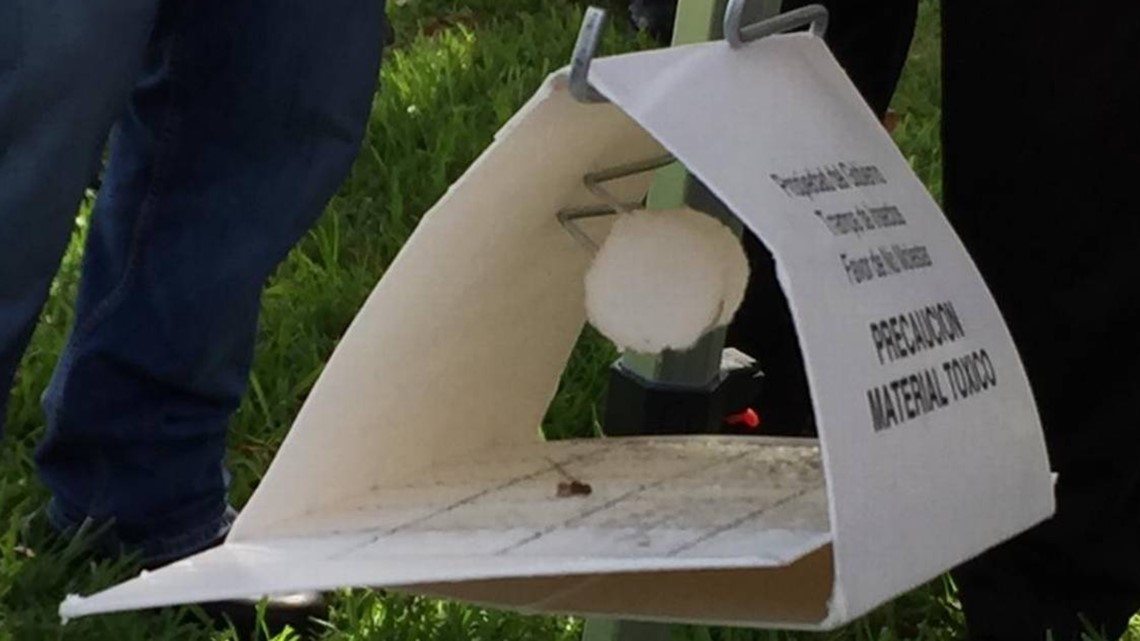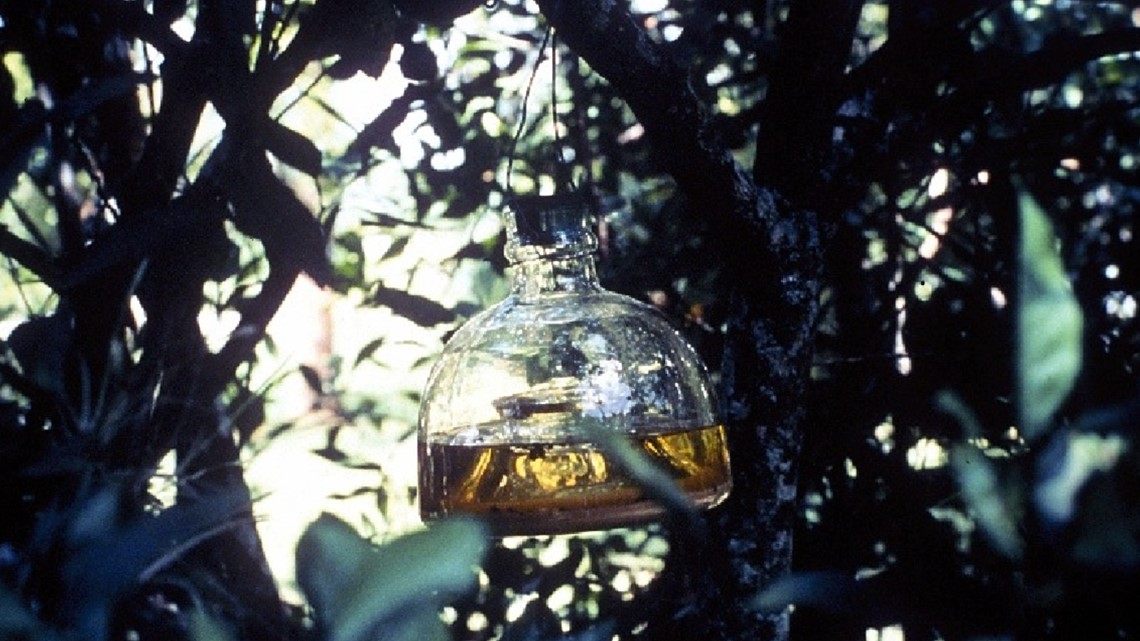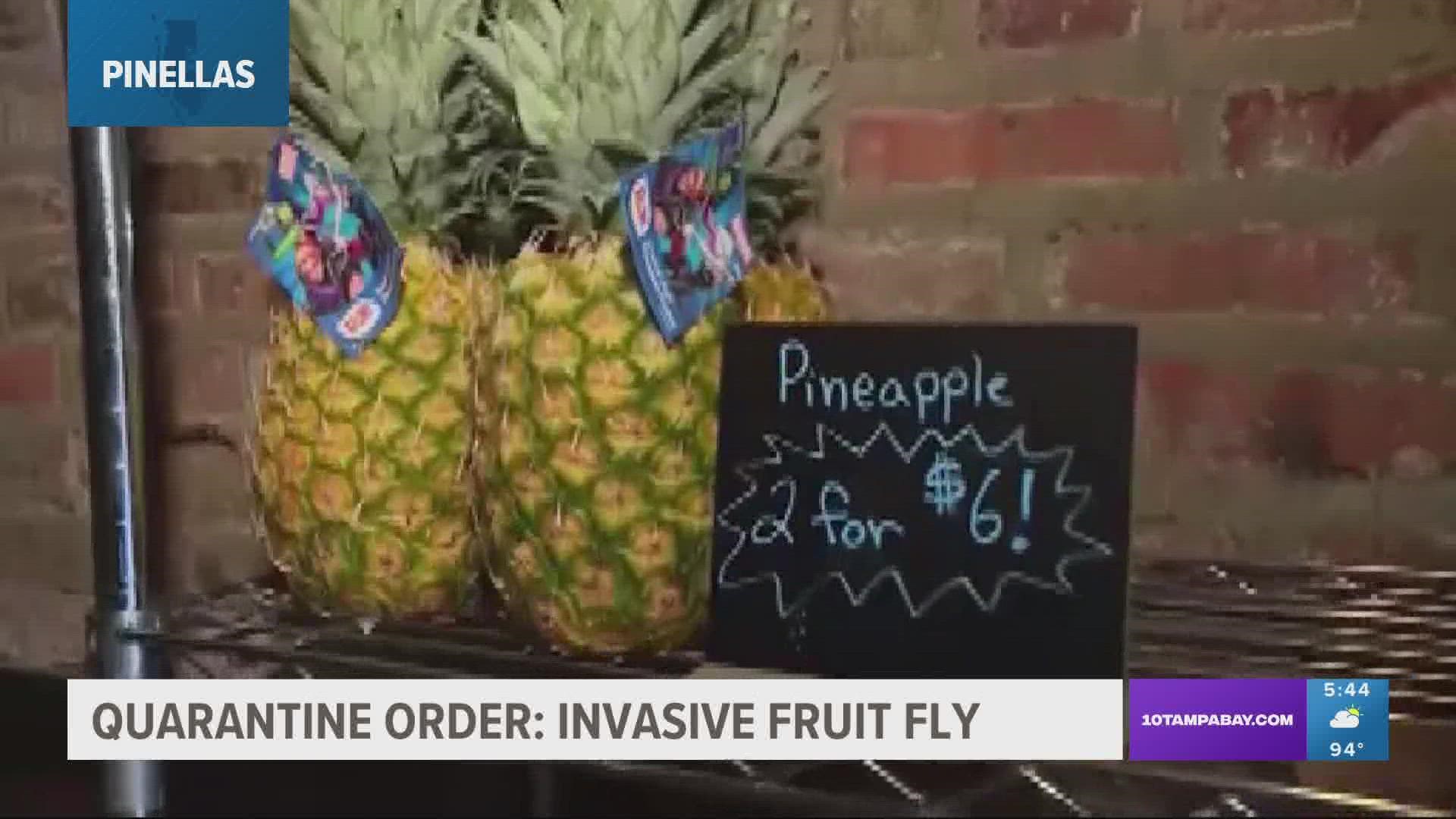ST. PETERSBURG, Fla. — Invasive fruit flies are buzzing around certain areas of St. Petersburg, posing a threat to the fresh fruits and vegetables at farmer's markets and grocery stores.
The Oriental fruit flies, which were first discovered in Pinellas County on May 17, triggered a quarantine for an area of St. Pete last month — part of the Florida Department of Agriculture's strategy to get the pests under control.
Under the quarantine, fruits, nuts and vegetables are not supposed to be moved or transported anywhere unless FDACS allows it. This goes for residential households, people selling fruits and vegetables outdoors and companies that leave crates of food outside.
The agency has also ramped up its routine trapping of the flies, with 56,000 fruit fly traps statewide and 500 in Pinellas County alone.
How exactly do the traps work?
FDACS uses two different types of fly traps in the statewide trapping program: the delta and the McPhail.


The aptly-named delta trap is shaped like a triangle and uses a lure to attract the flies. Once the bugs land on a trap, a sticky card captures them. The delta trap is only used to attract male Oriental fruit flies.


The McPhail trap looks like a small plastic bottle filled with liquid. It's a multi-lure trap with a cavity at the bottom and a hole that lets the pests in. Once flies enter the trap, they fall into the liquid and drown. The McPhail trap lures both male and female flies.
FDACS says the density of these traps being used around Florida depends on the risk assessment of the area. In this case, traps are being placed in an 81-square-mile area around fly detections in Pinellas County.
Are the traps working?
Eradication efforts have been underway for three weeks and agriculture officials say they haven't found any Oriental fruit flies in the St. Pete area since June 22.
In addition to the increased use of traps, FDACS says stakeholders within the quarantine area "have been successfully complying with the safeguarding measures currently in place."
What harm do the Oriental fruit flies cause?
The USDA describes the Oriental fruit fly as a "destructive agricultural pest" that can attack a wide variety of produce.
In fact, Florida agriculture officials say the fly is known to infest more than "430 different fruits, vegetables, and nuts by laying its eggs in the hosts, making them unmarketable."
When the flies attack, larvae tunnel through the flesh of the fruit as the bugs feed, making it unfit to eat, according to the California Department of Food and Agriculture. This leaves the inside of the fruit "a rotten mass."
While the Oriental fruit flies pose a threat to our fruits and vegetables, experts say they won't hurt people.
"There are no health consequences to eating fruit infected with larvae, it would just be unpleasant," FDACS wrote in a statement.

